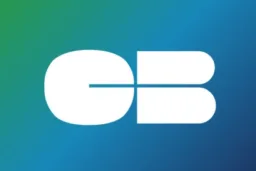Maestro Casinos
Maestro is a debit card payment service provider, which works under the aegis of MasterCard.
Maestro is a brand of debit cards, through which users can make payments from their bank accounts. Below you can find a frequently updated list of the newest Maestro casinos.
Note: UK players can no longer use cards when making transactions to or from an online casino.

Advantages of Maestro
+ Widely accepted over a number of retail and online businesses
+ Simple to use and a convenient way to carry money.
+ Instant payments across international markets.
+ Cross-currency payments.
+ Highest standards of security.
+ Can be used to deposit and withdraw funds from online casinos.
Disadvantages of Maestro
– Banking information has to be shared with online casinos.
– Merchants and banks are charged, which is indirectly charged from the end-users.
Maestro Short Facts
| Company Name: MasterCard Inc. Slogan: – E-mail: – Website: www.maestrocard.com Supervised by: – Transaction Time: Instant on Deposit – 1 to 3 Days on Withdrawal Min Transaction: 10 $/£/€ Deposit Fee: Normally $/£/€ 0; some casinos may charge up to 5% | Established: 1966 Address: 2000 Purchase Street, Purchase New York Phone Number: 1-636-722-7111 Security: 4-6 Digit PIN code Currencies: All major currencies Max Transaction: Set by the bank and the casino Withdrawal Fee: Normally $/£/€ 0; some casinos may charge up to 5% |
Using Maestro at Online Casinos
The main advantage of using a Maestro card at an online casino is its wide acceptance. Almost all casino sites accept card payments through Maestro, Visa and MasterCard. To use your Maestro card at an online casino, first, make sure that card payments are accepted at the online casino. Then head to the “cashier” section and select deposit funds. Enter the amount you want to deposit and also any promo code that may be applicable. You will then be given a series of payment options like card payments, online banking, e-wallets, pre-paid cards, etc.
Choose debit card payments, and then click on the Maestro logo. After finalizing on the payment gateway, simply click on “proceed/deposit” and you will be redirected to your bank’s main server, through a Maestro gateway. You may have to enter your PIN/password to validate the payment. After the payment is confirmed, you will be redirected back to the online casino’s main page, where you should see the fresh funds.
Card transfers via Maestro cards are free of charge for the end-users and payments are processed instantly. In some cases, online casinos may charge you extra for depositing funds via card payments. Sometimes, international payments may take up to 5-7 minutes to process. Payments made by US-based players to online casinos will not be processed through MasterCard/Maestro/Visa or American Express cards. US players are prohibited from using any US-based financial institution to fund online casinos. Only European, Canadians and some Asian citizens are allowed to fund their new Maestro casinos.
When was Maestro Launched?
Maestro debit cards have been in existence since 1966. It had a long and eventful history, during which it became a household name for millions of worldwide users. The first card that the company introduced, in 1966, was called Interbank Card Association. It was meant to simplify payments within 4 big banks of the Eastern Coast of the US. The four original banks behind the Maestro card were United California Bank, Wells Fargo, Crocker National Bank and the Bank of California.
Fast expansion in the 1970s
The first tranche of expansion came about in the 1970s, when the card was renamed as Master Charge, The Interbank Card, and partnered with all major national banks of the US, including First National City Bank and HSBC. The fundamental re-branding happened in 1979 when the card was renamed MasterCard International.
In the same year, its network had spread out to Europe, with a merger with EuroPay International, Europe’s largest credit/debit cards association. The current symbol of Maestro was developed during this period as a vein diagram with two (one red and one blue) overlapping circles. The logo went several simple changes but retained its original form.
Taking on new markets
The arrival of the 21st century marked a tremendous expansion for the merged entity, which expanded into Australia, Japan, China, India, and all other major economies of the world. According to 2015 data, there are 680 million active Maestro cards, across 100+ countries, and is accepted at more than 17 million retail outlets and 6 million online websites. Every second, Maestro watches over $13 million worth of transactions, a number that is only growing. Even with such a huge scale, the company manages to offer an instant transfer of funds with utmost security.
The growing popularity of Maestro cards is due to their wide acceptance and the impregnable trust people have in its institution. Maestro debit cards are issued by banks and other financial institutions, which are linked with MasterCard’s network of payment gateway. Maestro only issues debit cards, which are backed by real money in real accounts. Maestro doesn’t have credit card issuing capacity, but it does offer Maestro Prepaid Cards, which can be used without being linked to a bank account.
A Maestro prepaid card can be used for giving gifts, travelling to a foreign country, limiting excess expenditure, or making payments without having a bank account. Maestro prepaid cards also ensure full anonymity as it doesn’t require any personal information to process payments.
MasterCard is at the forefront of banking security and invests heavily in protecting its users. It uses Point-to-Point Encryption (P2PE) Payment Technology, Host Card Emulation Technology, Artificial Intelligence for recognizing fraudulent patterns, Transactions Auditing, etc. to provide a holistic security cover. Maestro Card transactions are additionally backed up by your bank’s security framework, which adds an extra layer of protection. In case you physically lose your card, your card can be deactivated just within 10 minutes.
You have to contact your bank if you lose your card. Carrying a lot of cash can be a big headache. To avoid carrying a lot of cash, the best way is to go plastic and use a debit card. Maestro cards enjoy wide acceptance across the globe, which makes them a convenient choice for going cashless. Moreover, you can use your Maestro Card to withdraw cash from any local ATM.
Convenience- Using a Maestro card for making payments is simple and straightforward. You don’t have to remember your banking details, and only a single four-digit PIN is enough to use your bank account. Simply swipe your card, enter the PIN and you are good to go.
Moreover, you won’t be charged for making payments as they only charge the merchants for using their gateway. Tracking your spending- You can access all your transactions made through your Maestro card, by approaching your bank for a payment history/ bank statement. You will get a detailed analysis of all your retail and online purchases.

Pay By Mobile casinos are always emerging, as this fast and safe payment option keeps growing i...
A bank transfer is a safe bet if you’re looking for a widely accepted, easy, and safe way...
MasterCard casinos are being launched all the time due to the popularity of this debit card wor...
To find PayPal casinos, you must consider criteria such as licensing, security measures, speed ...

Carte Bancaire’s partnership with Visa enhances its reliability and security, making it a trust...
Neteller is one of the most recognized and solid e-wallets in the market nowadays. Today, ne......
Ryan Spencer is NewCasino’s payment specialist. He observed the trend of online casinos moving towards e-wallets and decided early on to specialise in payment methods. With a keen interest in tech innovation, Ryan pursued a degree in Information Technology (IT) from the University of Birmingham. Over the last 6 years, he has combined his academic knowledge with the rise of modern payment methods, establishing himself as our payment methods expert.
Fact-Checked by Dhalia Borg, Head of Content
5 minread







